Decades of research clearly demonstrate that play—active and full of imagination—is more than just fun and games. It boosts healthy development across a broad spectrum of critical areas: intellectual, social, emotional, and physical. The benefits are so impressive that every day of childhood should be a day for play.
For children, play is like eating and sleeping—one of the vital signs of health. And yet it defies definition, just as creativity and love do. Professional playworkers in the United Kingdom define play as a set of behaviors that are freely chosen, personally directed, and intrinsically motivated. Playworkers create safe but adventuresome places for children to play. They are a watchful presence. They do not direct children’s play but help when necessary.
There are different types of play, and they often overlap in rich play scenarios. Knowing and watching for the broad types helps sensitize teachers and parents to the shifting landscapes children create. It also provides a tool for assessing whether a playful kindergarten is providing adequate opportunity and materials for all types of play.

Jean Liedloff spent two and a half years in the South American jungle living with Stone Age Indians. The experience demolished her Western preconceptions of how we should live and led her to a radically different view of what human nature really is. She offers a new understanding of how we have lost much of our natural well-being and shows us practical ways to regain it for our children and for ourselves.

“Big body play”―the sometimes rowdy, always very physical running, rolling, climbing, tagging, jumping, grabbing, and wrestling that most children love and many adults try to shut down―can and should be an integral part of every early childhood setting.
Drawing from evidence-based practice and the latest research, this book explains the multitude of benefits of big body play for young children’s social-emotional, cognitive, and physical development.

Harvard child psychologist Susan Linn tells the alarming story of childhood under siege in a commercialized and technology-saturated world. Although play is essential to human development and children are born with an innate capacity for make believe, Linn argues that, in modern-day America, nurturing creative play is not only countercultural—it threatens corporate profits. In an era when toys come from television and media companies sell videos as brain-builders for babies, Linn lays out the inextricable links between play, creativity, and health, showing us how and why to preserve the space for make believe that children need to lead fulfilling and meaningful lives.

In this digital age, there is still a place for knots, skimming stones, and stories of incredible courage. This book recaptures Sunday afternoons, stimulates curiosity, and makes for great father-son activities. The brothers Conn and Hal have put together a wonderful collection of all things that make being young or young at heart fun—building go-carts and electromagnets, identifying insects and spiders, and flying the world’s best paper airplanes.

From the vogue for nubile models to the explosion in the juvenile crime rate, this modern classic of social history and media traces the precipitous decline of childhood in America today−and the corresponding threat to the notion of adulthood. Deftly marshaling a vast array of historical and demographic research, Neil Postman suggests that childhood is a relatively recent invention, which came into being as the new medium of print-imposed divisions between children and adults. But now these divisions are eroding under the barrage of television, which turns the adult secrets of sex and violence into popular entertainment and pitches both news and advertising at the intellectual level of ten-year-olds. Informative, alarming, and aphoristic, The Disappearance of Childhood is a triumph of history and prophecy.
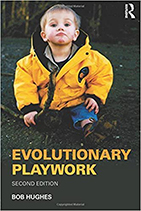
An outstanding book that should be read carefully by anyone who is interested in play, and then read again and again. Not only does Hughes cover vast amounts of material on the evolution and significance of play, he also makes practical suggestions for those supporting children’s play. It’s also an easy read with minimal jargon.
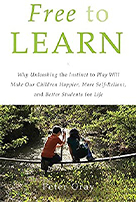
This is a book about children’s natural instincts to educate themselves, about the environmental conditions required for those instincts to operate optimally, and about how we, as a society, can provide those conditions as far less expense than what we currently spend on schools.. The drive to play is a huge part of children’s natural means for self-education. Over the past half century or more we have seen a continuous erosion of children’s freedom to play and, corresponding with that, a continuous decline in young people’s mental and physical health. If this trend continues, we are in serious danger of producing generations of future adults who cannot find their own way in life.
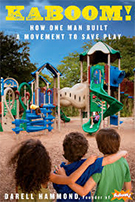
“Darell Hammond’s visionary work is helping big national attention to the critical ‘play deficit’ so many children face and transforming not just children but entire communities. Read this compelling, engaging book and be inspired.” — Marian Wright Edelman, President, Children’s Defense Fund
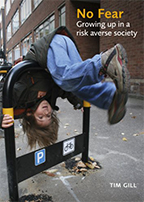
No Fear argues that childhood is being undermined by the growth of risk aversion and its intrusion into every aspect of children’s lives. This restricts children’s play, limits their freedom of movement, corrodes their relationships with adults and constrains their exploration of physical, social, and virtual worlds. No Fear advocates a philosophy of resilience that will help counter risk aversion and strike a better balance between protecting children from genuine threats and giving them rich, challenging opportunities through which to learn and grow.
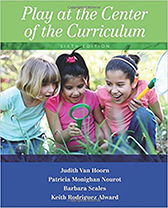
The leading text in the field, Play at the Center of the Curriculum seamlessly combines the features of a text on play and development with the features of an early childhood curriculum text to present a comprehensive, cogent rationale for placing play at the center of a balanced curriculum. Ideal for those who want to engage children in a developmental zone where children and teachers are learning from and with each other. This thoroughly updated Sixth Edition interweaves anecdotes of children’s play, theories of play and development, empirical evidence from research, and practical instructional strategies to give students a clear look at play and the curriculum.
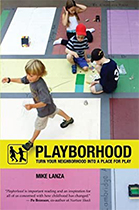
In this book you’ll find inspiring stories of innovative communities throughout the US and Canada that have successfully created vibrant neighborhood play lives for their children. You’ll also get a comprehensive set of step-by-step solutions to change your family and neighborhood cultures, so that your kids can spend less time in front of screens and in adult-supervised activities, and more time engaging in joyful neighborhood play.
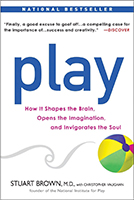
By definition, play is purposeless, all-consuming, and fun. But as Dr. Stuart Brown illustrates, play is anything but trivial. It is a biological drive as integral to our health as sleep or nutrition. We are designed by nature to flourish through play. Backed by the latest research, Play explains why play is essential to our social skills, adaptability, intelligence, creativity, ability to problem solve and more. Particularly in tough times, we need to play more than ever, as it’s the very means by which we prepare for the unexpected, search out new solutions, and remain optimistic. This book proves why play just might be the most important work we can ever do.
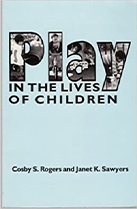
What is the best way for children to make the most of their lives? They must engage in self-paced, child-controlled play! Find out why play is so important, and how to support it, in this convincing review of what we know about how children grow and learn. What you find will change the way you teach or parent children from birth through their primary school years. Don’t let your children waste another precious minute of their childhood! Comprehensive enough to serve as a textbook on play.

Today’s parents often worry that their children will be at a disadvantage if they are not engaged in constant learning, but child development expert David Elkind reassures us that imaginative play goes far to prepare children for academic and social success. Through expert analysis of the research and powerful examples, Elkind shows how creative, spontaneous play fosters healthy mental and social development and sets the stage for academic learning in the first place. An important contribution to the literature about how children learn, The Power of Play restores play’s respected place in children’s lives and encourages parents to trust their instincts to stay away from many of the dubious educational products on the market.
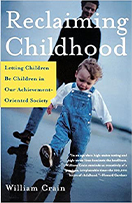
As our children are pushed harder than ever to perform so that they will one day “make the grade” in the adult world, parents are beginning to question the wisdom of scheduling childhood’s basic pleasures. In Reclaiming Childhood, William Crain argues that rather than trying to control a young child, the best a parent can offer is “a patient and unobtrusive presence that gives the child the security and the freedom to explore the world on her own.” He examines how children find their way to natural development through experiences with nature, art, and language, and makes a strong case for child-centered education―a movement that may be under fire, but that is very much alive.
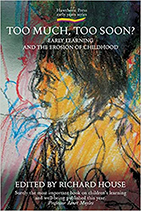
Too Much, Too Soon? tackles the burning question of how to reverse the erosion of childhood by nurturing young children’s wellbeing and learning capacity. Children’s lives have been speeded up by commercialization, adultification, and government programs such as No Child Left Behind. Twenty-two hard-hitting chapters by leading educators, researchers, policy-makers, and parents advocate for alternative ways for slowing childhood, better policy-making, and, most important, the right learning at the right time in children’s growth, when they are developmentally ready.
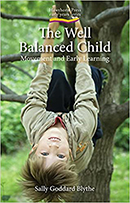
The Well-Balanced Child is a passionate manifesto for a “whole body” approach to learning which integrates the brain, senses, movement, and play. This fully revised edition includes a new chapter with a story and movement exercise that parents can use to help children reach their potential.
Risk has become a four-letter word in the U.S.— something to protect children from at all costs. Yet children throughout the ages played freely in the outdoors with their peers, usually without adult supervision once they reached a certain age. They took on as much adventure as they felt ready for. Injuries occurred, but when we have asked adults to review their play memories, they can think of few children they knew who suffered any serious harm.
“While early formal instruction may appear to show good test results at first, in the long term, in follow-up studies, such children have had no advantage. On the contrary, especially in the case of boys, subjection to early formal instruction increases their tendency to distance themselves from the goals of schools, and to drop out of it, either mentally or physically.” —Lilian G. Katz, Professor Emeritus, U. of Illinois
This paper is an outreach for advocacy during the Decade for Childhood 2012–2022 and beyond to proclaim that children’s play is much more than a frivolous act. Instead, play is a building block for humanity as well as academic components such as literacy, science, and mathematical skills, as well as the soft skills related to social and emotional development. A wide variety of play-based activities must be a part of all children’s educational experiences for their health, well-being, development, and overall learning.
The importance of play to young children’s healthy development and learning has been documented beyond question by research. Yet play is rapidly disappearing from kindergarten and early education as a whole. We believe that the stifling of play has dire consequences—not only for children but for the future of our nation. This report is meant to bring broad public attention to the crisis in our kindergartens and to spur collective action to reverse the damage now being done.
The importance of play to young children’s healthy development and learning has been documented beyond question by research. Yet play is rapidly disappearing from kindergarten and early education as a whole. We believe that the stifling of play has dire consequences—not only for children but for the future of our nation. This report is meant to bring broad public attention to the crisis in our kindergartens and to spur collective action to reverse the damage now being done.
There is a growing body of research that shows that play contributes greatly to children’s healthy development. In an extensive review of play research, Jeffrey Trawick-Smith of Eastern Connecticut State University, concludes that decades of research have shown that play is an important mediator in the physical, social, cognitive, and language development of young children. In spite of this, play faces threats from many directions in modern American life.
Education policy makers act as if play is frivolous — as if we needn’t make room for it. Focusing on early academic instruction, schools have largely removed playtime from kindergartens and have often eliminated or reduced recess in the elementary school grades. But if play is, in fact, an innate need, we cannot simply deprive children of opportunities for it. To do so is somewhat like depriving children of water or sleep. When this happens, serious consequences follow
Play has largely been pushed out of kindergarten classrooms and is currently vanishing from preschool classrooms as well, despite its importance for cognitive, social-emotional, and physical growth. It has been replaced with teacher-led instruction. One contributing factor that has moved early education in the U.S. away from play and toward cognitive instruction is the prevalent belief that children should learn to read at age 5. The assumption is that they will be better readers than if they wait until age 6 or 7. But there is essentially no evidence that this is true. Many other countries do not begin formal reading until age 6 or 7. They use guidelines similar to those proposed by Bank Street College in New York. Bank Street, a highly respected college for early childhood educators, identifies three stages of reading: emergent readers in preschool, kindergarten, and first grade; early readers in first and second grade; and early fluent/fluent readers in second and third grade. Using this approach allows time for preschool and kindergarten children to slowly, but effectively, build a bridge from oral language to written language. And it allows time for play-based learning.
Children’s health—today and in the future—is a critical public health challenge. Physicians tell us that today’s children will live shorter lives than their parents, while economists predict that the long-term costs of childhood obesity will be catastrophic.
A circle of logs; simple, natural items; unpaved, uncovered ground; sticks, sand, rocks, boulders. Mary Rivkin describes beautifully how children learn best – about their bodies, about each other, and about the Earth.
A circle of logs; simple, natural items; unpaved, uncovered ground; sticks, sand, rocks, boulders. Mary Rivkin describes beautifully how children learn best – about their bodies, about each other, and about the Earth.
Ten leading play activists expound on the benefits of play. If you read only one thing about the importance of play for children, this should be it. A quick, enjoyable, and thought-provoking read. Play is a way to learn about self and the world through self-created experiences. It starts with the child and not the subject matter. Nothing lights up a child’s brain like play.
111 East Myrtle Street
Hailey, ID 83333-5127